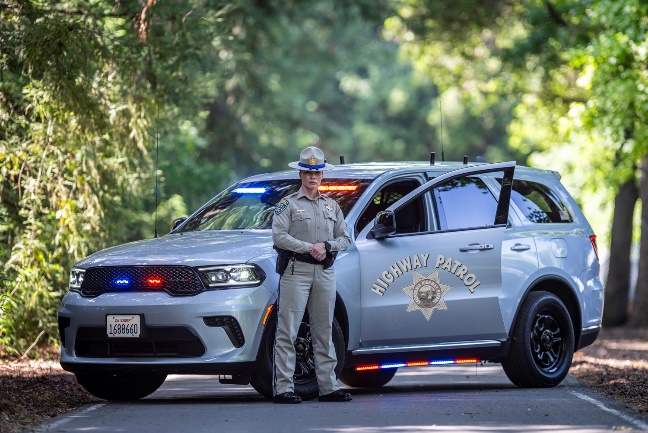e-Edition
Get the latest news delivered daily!
Get the latest news delivered daily!
e-Edition
Trending:
Q: Deploying new California Highway Patrol vehicles – Dodge Durangos – is a good way to be “stealthy” on the roads, said Bob Mead of Beaumont.
“My concern is since they are not as noticeable as the old CHP markings, what are the chances of fake impersonators pulling you over? I know there have been stories of this happening throughout the country with fake police vehicles.” Mead asked about the protocol for drivers afraid to pull over for an officer on the highway.
A: Our reader is referring to the CHP now using some Dodge Durango SUVs as patrol vehicles. The Durangos have CHP logos on their sides, but they are not as obvious as other CHP vehicles because they aren’t the traditional black and white. Rather than the typical black and white coloring synonymous with law enforcement vehicles, the vehicles are a variety of standard colors, including black, silver and gray.
The possibility that an imposter posing as a peace officer could pull a driver over has always been there, said CHP Officer Dan Olivas of the Inland Division.
“If you’re concerned about it, you can always call 911 and let them know you are being stopped and ask if this is a legitimate stop. They can reach out to the unit that should be in the area or check if there is a unit in the area that is making stops,” Olivas said. When you pull over, do so in public. Don’t flee because the officer will initiate a pursuit, Olivas said.
Another way a driver can tell a police stop is legitimate: By law, the car pulling you over must have a solid red light on it, Olivas said. (The Durangos have a solid red light on them.)
Q: Bob Mead asked about another concern. He said he is hearing impaired and asked if there is a method that peace officers use to communicate with those being pulled over to make the stop less stressful since the driver may be confused and can’t hear the officer.
A: The CHP does not have a specific protocol for this scenario, Olivas said.
“Once they are on the stop, we do our best to communicate. In the past stopping someone who is legally deaf meant writing notes back and forth to each other. We do the best we can.”
Drivers who are seriously hearing impaired or deaf could keep a note in the vehicle stating that they are hard of hearing, then show the officer this note to help reduce a misunderstanding. Be careful, however, NOT to just open the glove box; this could spook the officer. Keep this note in your center console or pull it out before the officer comes up to your window.
Q: Bob Roggenbuck of Menifee said that while driving on the 215 Freeway recently, he noticed orange netting in different sections along the freeway. He wants to know the purpose of the netting and whether it’s there for future construction projects.
A: Orange netting like this can have several purposes, said Eric Dionne, Caltrans spokesperson. “Without knowing the exact area of the 215 and which project the reader is referring to, the more common reason is for an environmentally sensitive area. It defines the boundaries of environmentally sensitive areas, such as those with valuable plants or animal habitats. It prevents construction personnel from accidentally disturbing the area.”
Orange netting can also be used as a temporary barrier to keep freeway workers, equipment and materials within a designated area, Dionne said, adding that it’s common in construction zones where netting helps to manage traffic flow.
Do you commute to work in the Inland Empire? Spend a lot of time in your vehicle? Have questions about driving, freeways, toll roads or parking? If so, write or call On the Road and we’ll try to answer your questions. Please include your question or issue, name, city of residence, phone number and email address. Write ontheroad@scng.com or call 951-368-9995.
Copyright © 2025 MediaNews Group












